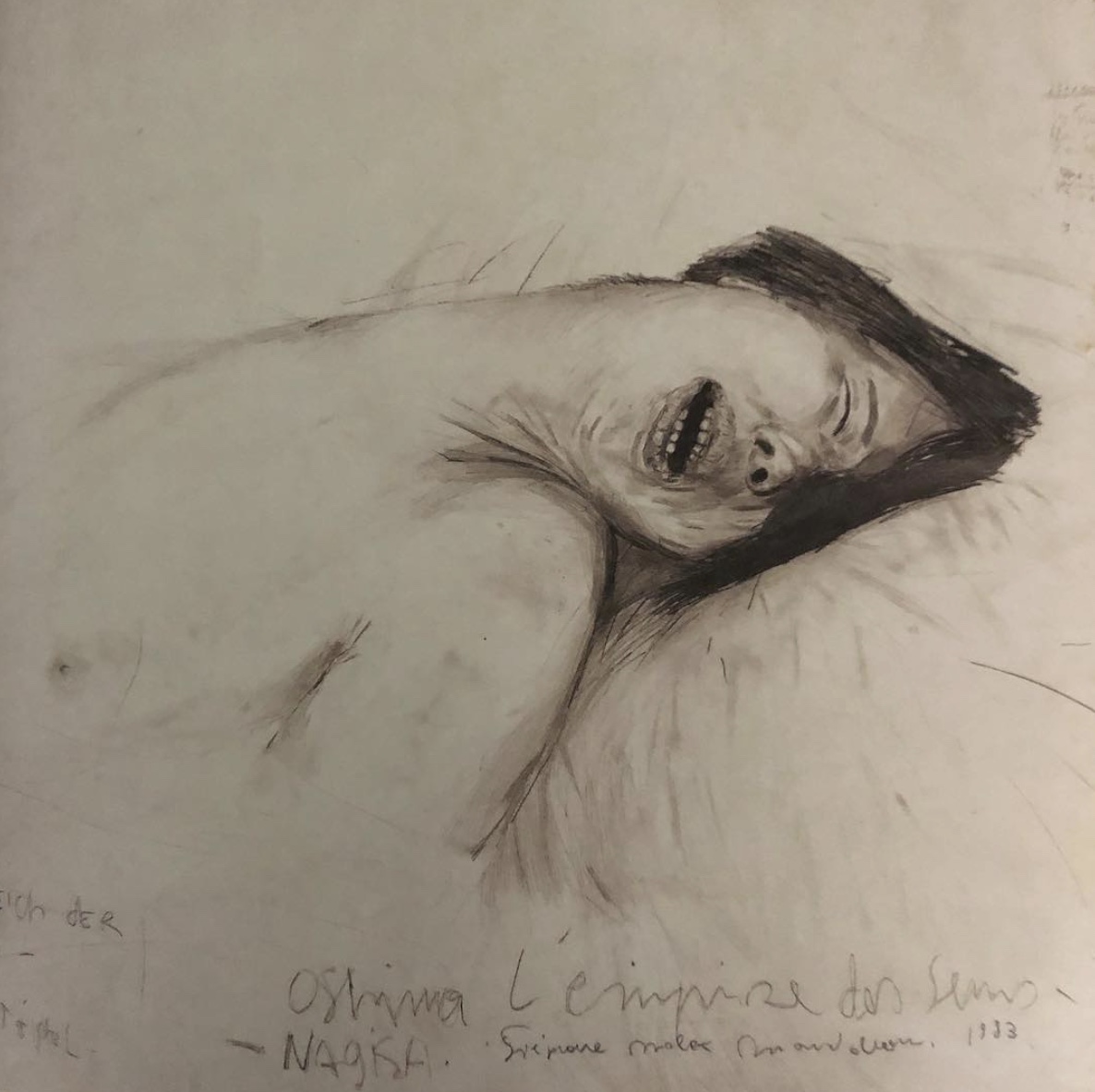Stéphane Mandelbaum: a tribute to the forgotten neo-expressionist artist at the Jewish Museum in Brussels
The first thing you notice is his long, sturdy face. Resentment and traces of fatigue nourish the slightly enlarged eyes, nose and lips. He is escaping the viewer’s gaze and gives the impression that his presence arises out of a sense of obligation. The slouched shoulders and crossed hands hanging down confirm the uneasiness of his inner world. The figure depicts the British painter Francis Bacon (Dessin N°1), who Stéphane Mandelbaum (1961-1986) drew over and over again throughout his short life.
Distorted faces, pleasures of transgression, tormented souls inhabiting the bodies of thugs, prostitutes and war criminals is what connects the two artists together. In comparison to Francis Bacon, who received recognition in his mid-thirties with the Three Studies for Figures at the Base of a Crucifixion, an unsettling triptych with writhing creatures set against an orange background, Stéphane Mandelbaum remained on the margins of the art world even decades after his death. The lack of notoriety did not though hinder him from pursuing his passion for drawing, a creative way to compensate for dyslexia.

Portraits and images are paired with words, phrases and scribbles, predominantly in blue ballpoint pen, that are scattered all over the paper. Mandelbaum’s drawings are reminiscent of George Grosz’s caustic criticism of society and the raw gestural style of Jean-Michel Basquiat, however in a rather monochrome version. There is an outpouring of messages on violence, sex, Jewishness meant to shock, offend, outrage. Stéphane Mandelbaum draws you into a phantasmagorical world that goes beyond traditional western representations.
According to museum researchers, the amount of time that an average viewer spends contemplating a work of art ranges from 17 to 27 seconds. This time can be considerably extended when in front of one of Mandelbaum’s drawings. It is as if he is challenging you to explore and decipher his dreamlike compositions. Arthur Rimbaud, the enfant terrible that inspired him, alongside others whose life also ended tragically, such as the writer Pierre Goldman and film director Pier Paolo Pasolini, is pictured in a mountain-like shape with his head turned towards the viewer and scrawls flowing down around it. This gives the impression of a hunchback, and Rimbaud indifferently carrying its burden.
Francis Bacon was quoted as saying that “The feelings of desperation and unhappiness are more useful to an artist than the feeling of contentment, because desperation and unhappiness stretch your whole sensibility.” The work of Stéphane Mandelbaum attests to this belief. He preferred traumatic experiences and the unacceptable to fuel his art. It was maybe because his art became his life that he entered the criminal underworld as an art thief. The precocious child of Arié Mandelbaum, painter and art teacher, and Pili Mandelbaum, illustrator, remained true to this raw expressive style until the bitter end.



